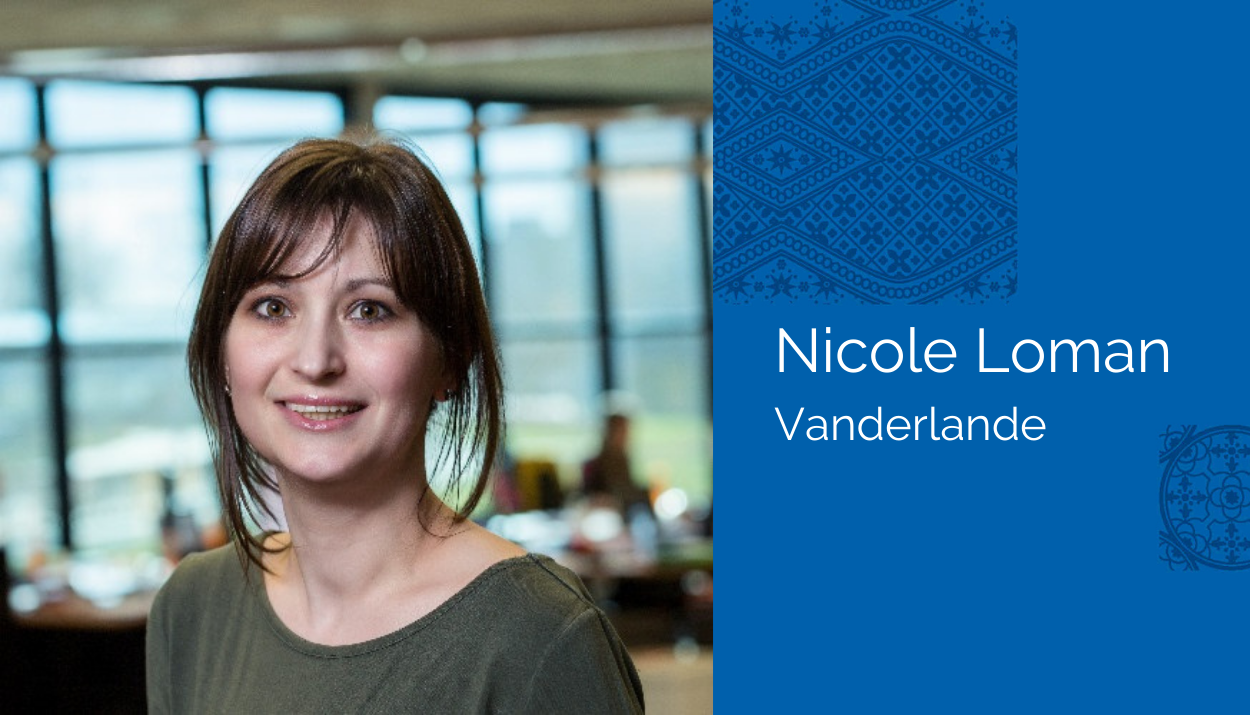“Thanks to ‘Tel mee met Taal’, dozens of employees have now completed language training.”
25 november 2021
Anyone who works in an international environment will inevitably have to deal with language differences. To overcome these differences, Vanderlande employees can follow language training at STE Languages. Nicole Loman (37) coordinates this for Vanderlande Industries. The subsidy scheme “Tel mee met Taal” plays an important role in this.
Vanderlande supplies transport systems for internal logistics worldwide. As an international company, English is the official language. So why do employees still follow a Dutch language course?
“Many of our people are expats and therefore come from abroad. Purely for work, they can make good progress using English, but Dutch is also widely spoken at Vanderlande. Speaking the local language helps them feel comfortable and connected with the rest of the team. From coffee small talk to good-natured leg pulling, you feel much more connected when you are able to join in the fun.”
You receive a subsidy from the “Tel mee met Taal” scheme for the Dutch language training. How did that come about?
“We work closely with STE in this regard. Last year we handled our first subsidy application. I was not familiar with ‘Tel mee met Taal’, but STE provided help and advice. They then steered us through both the application and administrative process.”
Can you tell us more about the role of STE in applying for a subsidy?
“What conditions need to be met? Who is eligible? What should the grant application look like? At STE they have answers to all these questions. We have a permanent point of contact who is very involved and is always available. If an application is unexpectedly rejected, as happened the first time, they look at how things can be improved. In the end, that application was approved, and we received a subsidy of more than € 40,000. In a later subsidy round, we were awarded an additional € 24,000. Through ‘Tel mee met Taal’, dozens of employees have now completed language training.”
How do your employees find their way to STE?
“People register through the site. We will then contact them and plan an intake at STE. During the intake, their current language level is determined. Then the appropriate course is selected. Anyone up to target level B1 can register and will be reimbursed for the training. Those who wish to develop further will have to fund it themselves unless the training is necessary for a specific certain employment position.”
How are the results of the students in general?
“Good! In the main, whoever has registered has committed fully and completed training; there have been very few withdrawals. People are aware in advance that it takes time. After all, it is a process of 2 hours a week for 15 weeks and there is also self-study. That does require focus and dedication.”
Suppose there is a withdrawal, how do you deal with it?
“Then we engage with STE to look for a solution suitable for all parties. For example, we recently had someone who had to stop training due to a change in circumstances, but who was still interested. That person was allowed, by STE, to follow a new training course free of charge. Of course, this is only possible in certain situations, but it shows how STE thinks along with us.”
STE offers various forms of instruction, such as online and in-person, but also at customers' locations. To what extent do you use that?
“Before the corona pandemic, we regularly had in-company training at Vanderlande in groups of 8 or more participants. This was cost-effective and the participants also found it enjoyable. Due to the lockdowns, we have had to stop in-company training for the time being. People are now entering the regular Open Enrollment. Depending on what an individual wants, the choice can be made for lessons at the STE location or via a Virtual Classroom.”
How do you see the future of your language training?
“Some things have changed structurally due to the corona virus. Depending on the measures in force at the time, we currently work fully or partly from home. That also has an effect in the long term. For the future, we expect our people to work on average 40% from home, 60% at Vanderlande. People have become accustomed to virtual teaching methods. That is a positive change that offers new opportunities. It is up to us to continue to find a good balance. The world has changed a bit, but it continues to turn.”


